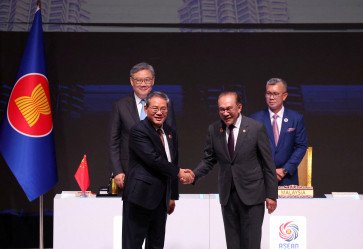
In a geopolitical strategic move, China and ASEAN have upgraded their free trade agreement to counter U.S. tariffs, boosting bilateral trade to $771 billion. This “3.0” pact targets digital and green sectors, but critics decry it as Beijing’s tool for regional dominance, fueling South China Sea tensions and eroding global trade rules.
Quick Insights
- Trade Expansion: The FTA reduces barriers, positioning itself as an alternative to Trump-era tariffs and promoting freer trade.
- Strategic Risk: It enhances supply chain strength but increases reliance on China’s rare earths and export controls.
- ASEAN’s Balancing Act: ASEAN’s engagement with RCEP reveals internal divisions and a tilt toward China’s economic model.
- Rising Tensions: The pact heightens geopolitical risks, potentially undermining ASEAN’s neutrality amid global flashpoints.
Tariff Wars ignite Asian alliances
ASEAN’s shift toward China, led by figures like Malaysia’s Anwar Ibrahim and China’s Li Qiang, highlights a strategic pivot amid Trump’s tariffs. This “industrial interdependence” promises economic gains but risks isolating the U.S., with ASEAN nations like Vietnam and Thailand gaining tariff relief on exports while potentially alienating Washington. Critics argue this alliance exposes ASEAN’s vulnerability to Chinese influence, as the pact includes provisions for e-commerce and investment that could funnel technology transfers to Beijing, undermining intellectual property rights.and favoring state-controlled enterprises over free-market competitors.
South China sea shadows threaten’s large
Philippine President Ferdinand Marcos Jr.’s recent condemnation of Chinese aggression in the South China Sea adds irony to the FTA signing, as the deal deepens economic ties despite territorial disputes. The upgraded pact’sfocus on maritime cooperation and supply chains might embolden China’s claims, with provisions for joint ventures in fisheries and energy sectors potentially legitimizing Beijing’s militarization. This could escalate conflicts, as ASEAN members like the Philippines and Vietnam face pressure to prioritize trade over sovereignty, risking a domino effect where economic incentives override security concerns and weaken multilateral efforts like the UN Convention on the Law of the Sea.
Conclusion
The ASEAN-China FTA 3.0 marks a new chapter in regional trade, promising growth through digital and green cooperation. Yet beneath the optimism lies growing unease — fears of economic dependence, geopolitical manipulation, and weakened sovereignty. As trade deepens, ASEAN faces the challenge of balancing prosperity with strategic independence in a divided world.
Stay connected with Unwires.com for more geopolitics, bollywood stories, guides, and inspiration.After all, every great journey begins with a spark — and Unwires is that spark. ⚡


